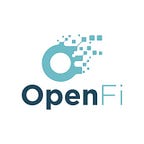Decentralized Finance (DeFi)
A new wave of financial innovation is upon us. Decentralized Finance (DeFi) provides the solid foundation for new financial services that are so powerful and advantageous that we will soon look back on them and question how we ever operated without them.
Decentralized financial instruments make cryptocurrency and the blockchain sector capable of accomplishing what was once only possible in traditional money markets. Thanks to the likes of Compound and Balancer, services such as borrowing and lending can now take place in a wholly decentralized manner, without ever involving banking institutions.
This produces a multi-frontal, paradigm shifting, natural growth area — one that is fueling the digital currency boom. This new financial ecosystem is already operational. Within only two years, DeFi protocols have locked in over $19 billion in assets — and there are DeFi coins that have outperformed Bitcoin (BTC) this past year.
In time, more financial instruments will be introduced as protocols evolve. The protocols have developed into a complex ecosystem, with several standout projects and tokens. Already there are crypto dollars such as Tether (USDT), Circle (USDC) and Maker (DAI), there is automated market making on Uniswap, liquidity mining on Compound, asset management on YFI and flash loans on Aave — and that is just scratching the surface. The potential for growth with new opportunities and developments is truly staggering.
These projects serve as definitive proof that cryptocurrency has a place in finance beyond speculative trading, and as new protocols are introduced the breadth of financial instruments available to consumers will continue to grow.
As the popularity of DeFi grows, there are still some potential sticking points which the sector needs to overcome. The bulk of the DeFi sector is still overly reliant on the Ethereum network, which has almost single-handedly borne the strain of its rapid growth. In 2020 the Ethereum network slowed, while the average cost of transactions rose from a few cents to over $12 in September.
For this reason, cross-chain technology will play an important role in the success of DeFi in 2021 and beyond. Cross-chain will allow the DeFi sector to spread the burden of increased demand across multiple blockchains. PlasmaPay is one of the projects which is seeking to directly address this matter with its own cross-chain solution called HyperLoop. Once assets are represented on PlasmaPay’s proprietary blockchain users will enjoy faster transaction times and a zero gas fee model.
The success of DeFi will be determined by several factors: transaction fees, transaction speeds, and users being able to exchange their fiat money for cryptocurrency and back again. With the help of innovative players in the space, all of these challenges can be met. With so many forward-thinking companies operating in the space, it’s hard to bet against this emerging giant.
